Old Film cameras?
-
Anybody like old film cameras and like to take photos with them and marvel at what is now about like as valuable as an 8 track tape player? The film camera birth and development and death happened in a span of about 100 years. I think I have about about 140....although I sold a half dozen or so of them. I love to take one out and make some B&W exposures and develop them and marvel at what is now old technology but..... wonderful at the same time. You can buy what used to be high dollar cameras for about what a trip to a fast food place would set you back.
Some of them. The ones I don't love as much as others.
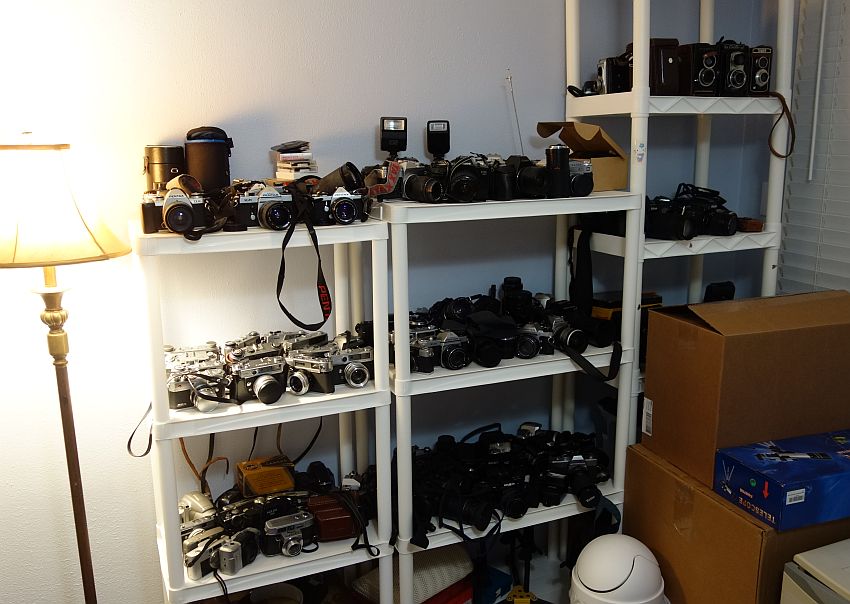
-
This post is deleted! -
Here are the ones I have on display in my "museum." I used all of them at one time or another, as part of my work as an architect. But digital is so much faster and flexible I haven't used film in quite a few years, at this point. I used to have a good 4x5 Omega view camera, which is one of the few I sold. The view camera shown here is a "build this camera yourself from our kit!" version. It actually works, but you would never use it in a professional situation.
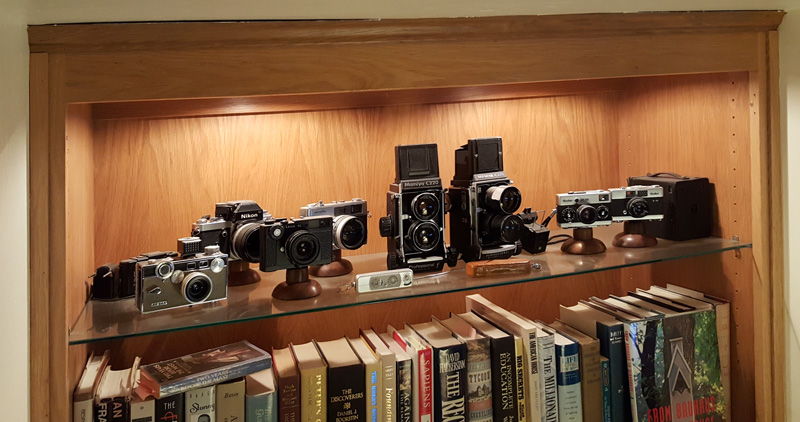
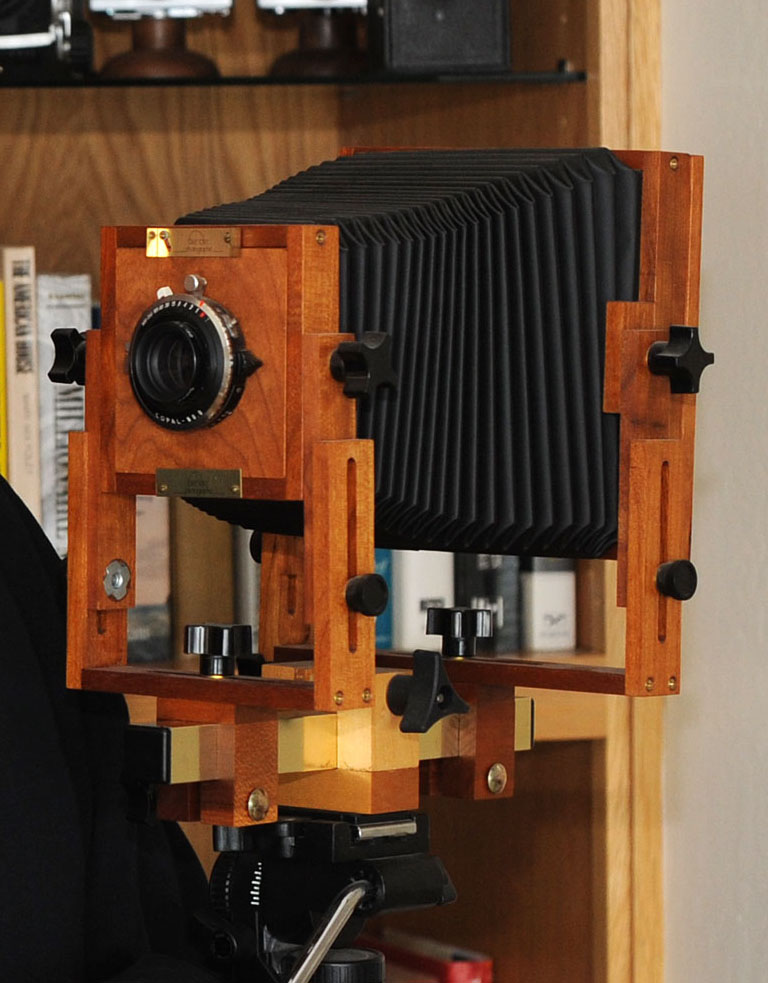
-
I have a 1938 Leica 2 with 3 lenses, extension tubes and variable viewfinder that a friend gave me, it was one of the few things the family managed to bring with them on escaping from Czechoslovia during WW2. Also 2 Leicaflex SL that were my parents with prime lenses from 21mm to 560mm. these work extremely well on my Sony A7 with adaptors.
Regards, Stuart.
-
I still own a Minolta X-370 35mm. I have not used it for a very long time.
-
The camera that holds the record for most produced in the USA is the Argus C3. You can find them on ebay any day of the week for any price you are willing to pay.
I wrote this review of one a friend gifted me:
Deadin gifted me a camera. It's a Argus C3 Rangefinder made in the USA from 1939 to 1957. Over a million and a half were made. The most produced camera line made in America back then and probably for ever more for the numbers produced record.
It's call the "Brick" because it looks like one and being made with a lot of metal it feels like one. Nothing about it is automatic. Side push a lever like a gear shift to unlock the film winding knobs to advance the film from one exposure to the next. Once your knob locks you push over a switch on the front to cock the shutter. You look through the rangefinder window to align the top and bottom view while turning either the lens barrel or the wheel at the top front. The Shutter speeds are another wheel 10.25, 50, 100, 300. Aperture 3.5 to 16 set on the front of the lens. There is also a B mode under the picture taking button.
I have another that I had no luck with at all. This one is really clean as I received it and I did a little lens cleaning to help the situation. The lense comes off and there were two other choices of lens. The one on this one is the standard 50mm. Taking the lense off is a specialized project in itself... but all things considered who needs any other lens.
I went out to Battleship park to try it out. I was guessing exposure on an overcast day. Most shots taken with either a shutter speed of 50 or 100. I varied the aperture but stayed mostly in the middle at about 8.
The biggest problem was... in spite of calling myself paying attention... I got a few double exposures. That's partly the problem of the cock the shutter thing that isn't linked to the film advance. Toward the end I think somehow the film didn't advance as it should too. Some of the double exposures look kind of artsy fartsy actually.
In any case... fun camera to take for a test run.
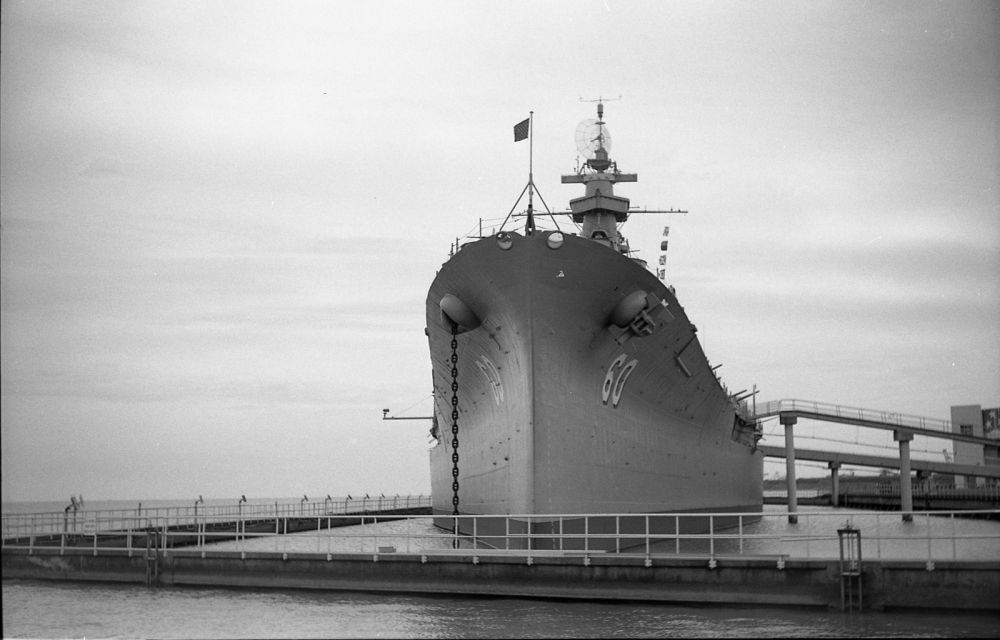
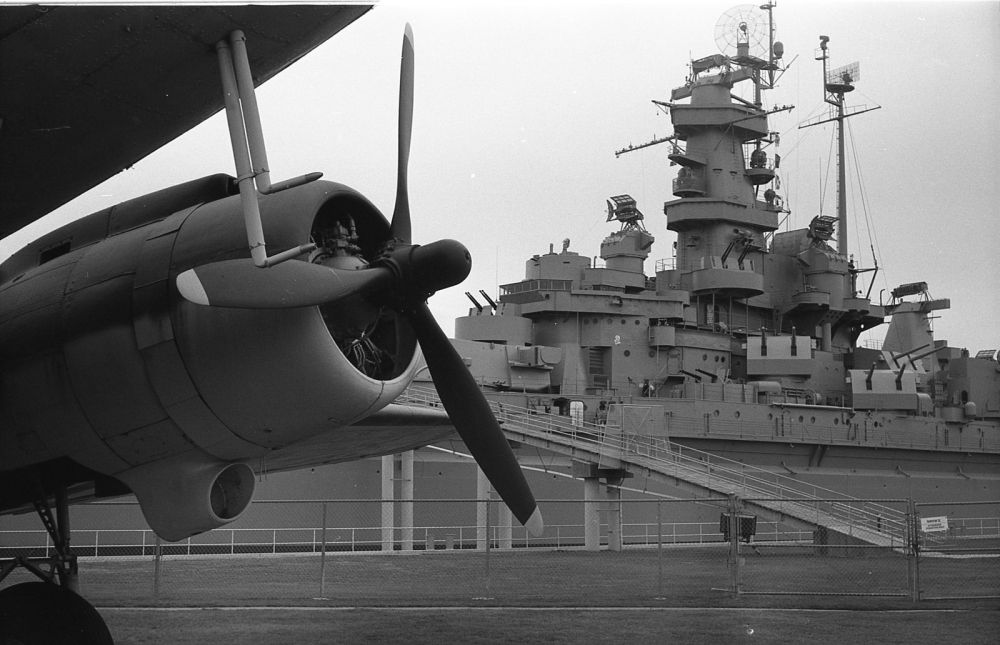
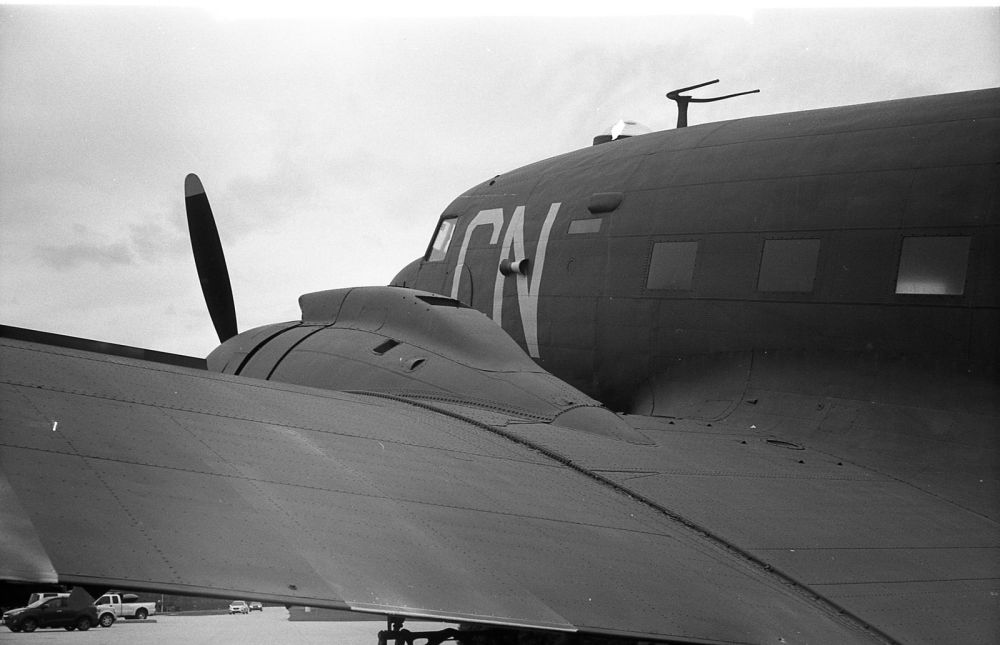
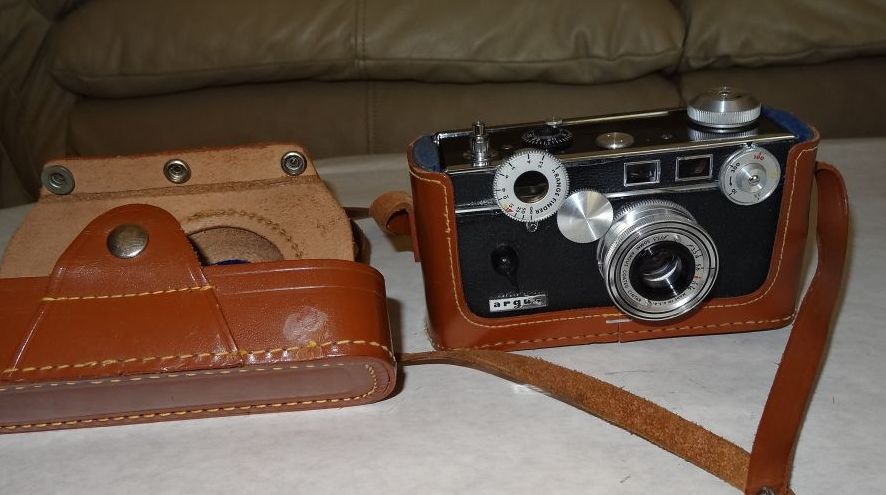
-
@Niner You will notice a "brick" on the left end of my "shelf museum" of retired cameras. My mother gave it to my father some time in the 1950s. It was very slow to use -- but not as slow as my view camera -- and we did indeed have our share of double exposures in the Kodachrome carousels.
-
I miss black and white. I know you can still do it in the digital age, but it's just not the same as watching that image come up in the developer tray under the darkroom safelights. That was as close to magic as we ever achieved in the postmodern world.
-
@Newell-Post It's simple enough to do it today. B&W is easy to develop with a few pieces of mostly plastic equipment and a developer like D-76 and and fixer and a darkroom bag. What you do is develop the negatives and scan them on a photo scanner like a Epson V600. Film is really a different medium than digital. Playing with old cameras just to experience using them can be fun.
-
@Niner I know. I used to have a full B&W darkroom and I later scanned a lot of 35mm, 120/220, and even 4x5 negatives for work. But the full film, paper, chemicals, and enlarger experience was delightful alchemy.
-
@Newell-Post My old Beseler enlarger is out in the garage. I haven't made any prints in decades.
Once, a lot of years ago, I got a sore throat that was really bad. I went to the eye, ears, nose and throat doctor and he said my throat looked pre-cancerous and it was caused by smoking. I gave up smoking for good as a result. I found out later, reading about developing, that breathing chemicals leaning over trays in a bath tub can cause the same sore throat. I had been making prints previous to the sore throat. But... I gave up smoking so I guess I got my money out of that enlarger many times over.
-
Locked by
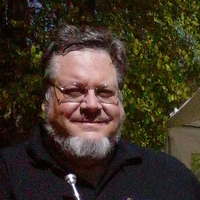 barliman2001
barliman2001